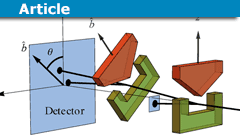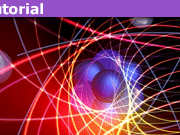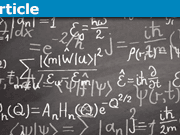PBS Video Comment: “What If Physics IS NOT Describing Reality”
PBS Space Time produces some very good videos on the foundations of quantum mechanics (QM), so let me comment on their video What If Physics IS NOT Describing Reality to provide (crucial) missing information. This comment pertains only to the first 9 min of the video, i.e., it has nothing to do with “entropic uncertainty,” so you don’t have to watch more than that before reading my comment. After reading my comment, hopefully, you will appreciate that the physics of the quantum reconstruction program (defined below) is well-grounded in reality.
In 1996, Rovelli challenged physicists [1] to derive the formalism of QM from “physical principles and postulates” like Einstein derived the Lorentz transformations of special relativity (SR) from the relativity principle and light postulate. There were many takers for the challenge, one of which was Zeilinger and his Foundational Principle of QM in 1999 [2]. Hardy followed with “Quantum Theory from Five Reasonable Axioms” in 2001 and there were many others en route to “the first fully rigorous, complete reconstructions” by Chiribella, D’Ariano & Perinotti [3] and Masanes & Mueller [4] in 2010-11 (with many more thereafter). This axiomatic reconstruction of QM based on information-theoretic principles (quantum reconstruction program) has succeeded in rendering QM a “principle theory” exactly like SR per Rovelli’s challenge.
[We spell all of this out for the “general reader” in our book, “Einstein’s Entanglement: Bell Inequalities, Relativity, and the Qubit” Oxford UP (2024), this comment is just a summary.]
A “principle theory” per Einstein is one whose formalism follows from an empirically discovered fact [5]. SR is a principle theory because its kinematics (Lorentz transformations) follow from an empirically discovered fact called the light postulate, i.e., everyone measures the same value for the speed of light c, regardless of their relative motions. Since c is a constant of Nature according to Maxwell’s electromagnetism, the relativity principle — the laws of physics (to include their constants of Nature) are the same in all inertial reference frames — says it must be the same in all inertial reference frames. And, since inertial reference frames are related by uniform relative motions (boosts), the relativity principle tells us the light postulate must obtain, whence the Lorentz transformations of SR.
Likewise, the quantum reconstruction program has shown that the kinematics of QM (finite-dimensional Hilbert space) follows from an empirically discovered fact called “Information Invariance & Continuity”:
The total information of one bit is invariant under a continuous change between different complete sets of mutually complementary measurements.
which Brukner & Zeilinger extended from Zeilinger’s Foundational Principle in 2009 [6]. In layman’s terms that simply means everyone measures the same value for Planck’s constant h, regardless of their relative spatial orientations (let me call that the “Planck postulate”). Since h is a constant of Nature per Planck’s radiation law, and inertial reference frames are related by different spatial orientations (rotations), that empirically discovered fact can be justified with the relativity principle exactly like the light postulate of SR.
Quantum superposition is one consequence of the Planck postulate and that leads to ‘average-only’ conservation, which is responsible for the Bell-inequality-violating correlations of quantum entanglement. However, once you understand how ‘average-only’ conservation follows from quantum superposition, which follows from the Planck postulate, which follows from the relativity principle and Planck’s radiation law, there is nothing mysterious about the Bell-inequality-violating correlations of QM. Here is how those correlations make perfect sense using spin-1/2 (as shown in the video).
Suppose you send a vertical spin-up electron to Stern-Gerlach (SG) magnets oriented at 60 deg relative to the vertical (Figure 1, a la the video where they sent the vertical spin-up electrons to horizontal SG magnets).

Figure 1
Since spin is a form of angular momentum, classical mechanics says the amount of the vertical +1 angular momentum that you should measure at 60 deg is +1*cos(60) = 1/2 (in units of

Figure 2
But, the SG measurement of electron spin constitutes a measurement of h, so everyone has to get the same
Now suppose Alice and Bob are measuring the spin singlet state (the two spins are anti-aligned when measured in the same direction, as shown in the video) and Alice obtains +1 vertically and Bob measures his particle at 120 deg relative to Alice (Figures 3 and 4). If Bob had measured vertically he would have obtained -1, so at 120 deg Alice says he should get 1/2 per our single particle example.

Figure 3

Figure 4
But of course, Bob must measure the same value for h that Alice does, so he can’t get the fractional value of h Alice says he should (otherwise, Alice would be in a preferred reference frame). Instead, his outcomes at 120 deg correspond to Alice’s +1 outcomes vertically average to 1/2 just like the single-particle case. And, of course, the data are symmetric so Bob can partition the results according to his

Figure 5

Figure 6

Figure 7
This should remind you immediately of an analogous situation in SR. There when Alice and Bob occupy different reference frames via relative motion, they partition spacetime events per their surfaces of simultaneity and show clearly that each other’s meter sticks are short. Consider the following events:
- Event 1: 20-year-old Joe and 20-year-old Sara meet.
- Event 2: 20-year-old Bob and 17.5-year-old Alice meet.
- Event 3: 22-year-old Bob and 20-year-old Kim meet.

Figure 8
There are three sisters (Sara, Kim, and Alice) in one reference frame moving at 0.6c relative to the reference frame of two brothers (Joe and Bob). The boys are the same age in their reference frame and the girls are the same age in their reference frame. This establishes simultaneity for each set, i.e., events are simultaneous for the boys if the events occur when the boys are the same age, e.g., Events 1 and 2 (Figure 8). Likewise for the girls, e.g., Events 1 and 3 (Figure 9). [Time differences are exaggerated for effect.]

Figure 9
According to Bob’s partition (Figure 8), the distance between Sara and Alice is 1000km while Alice says it’s 1250km. Clearly, Bob’s partition of the data shows Alice’s meter sticks are short. But, according to Alice’s partition (Figure 9), the distance between Joe and Bob is 800km while Bob says it’s 1000km. Clearly, Alice’s partition of the data shows Bob’s meter sticks are short.
In other words, the mystery of Bell-inequality-violating correlations from quantum entanglement resides in ‘average-only’ conservation that results from “no preferred reference frame” (NPRF) giving the observer-independence of h (NPRF + h). And, the mystery of length contraction resides in the relativity of simultaneity that results from “no preferred reference frame” giving the observer-independence of c (NPRF + c).
So, whose meter sticks are short? This question arises from the (wrong) constructive perspective, there is no causal mechanism for shortening meter sticks in SR. Length contraction is not a dynamical effect, it is a kinematic fact due to the light postulate, as justified by the relativity principle.
Likewise, who has to average their data to conserve spin angular momentum? This question arises in the (wrong) constructive perspective, there is no non-local, superdeterministic, or retro causal mechanism responsible for the Bell-inequality-violating correlations of QM. ‘Average-only’ conservation is not a dynamical effect, it is a kinematic fact due to the Planck postulate, as justified by the relativity principle.
Quantum information theorists have shown that you can think about QM as a principle theory, just like SR. This principle explanation of the Bell-inequality-violating correlations does not require non-local, superdeterministic, or retro causal mechanisms, exactly as the principle explanation of length contraction does not require the luminiferous aether. However, the physics of the quantum reconstruction program is clearly describing reality.
References
- C. Rovelli, “Relational Quantum Mechanics,” International Journal of Theoretical Physics 35, 1637–1678 (1996).
- A. Zeilinger, “A Foundational Principle for Quantum Mechanics,” Foundations of Physics 29(4), 631–643 (1999).
- G. Chiribella, G. D’Ariano, and P. Perinotti, “Probabilistic theories with purification,” Physical Review A 81, 062348 (2010).
- L. Masanes and M. Mueller, “A derivation of quantum theory from physical requirements,” New Journal of Physics 13, 063001 (2011).
- A. Einstein, “What is the Theory of Relativity?” London Times, 53–54 (1919).
- C. Brukner and A. Zeilinger, “Information Invariance and Quantum Probabilities,” Foundations of Physics 39(7), 677–689 (2009).
PhD in general relativity (1987), researching foundations of physics since 1994. Coauthor of “Beyond the Dynamical Universe” (Oxford UP, 2018).










Thanks
Bill
"This axiomatic reconstruction of QM based on information-theoretic principles (quantum reconstruction program) has succeeded in rendering QM a “principle theory” exactly like SR per Rovelli’s challenge."
What does saying QM is a “principle theory” mean? Does it make it any more true? Does it make it unfalsifiable?
"
As stated in my Insight, Rovelli is generally credited with inspiring the quantum reconstruction program (QRP). Here is the quote often used or referenced in QRP papers:
"
[Q]uantum mechanics will cease to look puzzling only when we will be able to derive the formalism of the theory from a set of simple physical assertions (‘postulates’, ‘principles’) about the world. Therefore, we should not try to append a reasonable interpretation to the quantum mechanics formalism, but rather to derive the formalism from a set of experimentally motivated postulates.
The reasons for exploring such a strategy are illuminated by an obvious historical precedent: special relativity. … Special relativity is a well understood physical theory, appropriately credited to Einstein’s 1905 celebrated paper. The formal content of special relativity, however, is coded into the Lorentz transformations, written by Lorentz, not by Einstein, and before 1905. So, what was Einstein’s contribution? It was to understand the physical meaning of the Lorentz transformations.
"
You can see that Rovelli is motivated by a desire to make quantum mechanics "cease to look puzzling." Physicists and philosophers in foundations of physics (foundations community) have been working to "append a reasonable interpretation to the quantum mechanics formalism" for decades, but they have still not produced a consensus interpretation. QRP is an entirely different approach to make quantum mechanics (QM) "cease to look puzzling" in hopes of escaping the quagmire of the interpretations program. The key is to understand the difference between “constructive” and “principle” theories.
In 1919, Einstein wrote:
"
We can distinguish various kinds of theories in physics. Most of them are constructive. They attempt to build up a picture of the more complex phenomena out of the materials of a relatively simple formal scheme from which they start out. Thus the kinetic theory of gases seeks to reduce mechanical, thermal, and diffusional processes to movements of molecules, i.e., to build them up out of the hypothesis of molecular motion. When we say that we have succeeded in understanding a group of natural processes, we invariably mean that a constructive theory has been found which covers the processes in question.
"
According to the constructive theory of the kinetic theory of gases, properties such as temperature and pressure of a gas are understood by averaging dynamical and causal facts for the particles of the gas. Temperature is associated with the average kinetic energy of the gas particles and pressure is associated with the average change in momentum of the gas particles in collisions with the container walls.
Most of the foundations community is looking for a constructive account of QM, i.e., an account in terms of dynamical laws and/or mechanistic causal processes (“causal mechanisms” for short). Unfortunately, the foundations community has discovered that if you want a constructive explanation for the observed Bell-inequality-violating correlations predicted by QM (resulting from entanglement), you will have to accept that the world works according to “spooky actions at a distance” (violating locality, as in Bohm’s pilot wave) or that causes from the future create effects in the present (violating statistical independence, as in retrocausality) or that there exists “superdeterministic” causal control of experimental procedures to include the selection of measurement settings (violating statistical independence) or that people can correctly disagree on the outcome of one and the same experiment (violating intersubjective agreement, as in QBism) or that a single experimental measurement can produce all possible outcomes (violating the uniqueness of experimental outcomes, as in Many Worlds). Those are pretty serious implications for reality, consequently there is no consensus constructive account of QM in the foundations community after decades of debate. That's why Rovelli suggested we turn to history for a way out of this morass.
As it turns out, an analogous situation existed in the late 1800’s. At that time, there was no consensus constructive explanation (e.g., the luminiferous aether) for the observer-independence of the speed of light c, i.e., everyone measures the same value for c, regardless of their uniform relative motions (“light postulate” of special relativity (SR)). Einstein also worked on a constructive explanation before giving up, writing:
"
By and by I despaired of the possibility of discovering the true laws by means of constructive efforts based on known facts. The longer and the more despairingly I tried, the more I came to the conviction that only the discovery of a universal formal principle could lead us to assured results.
"
That is, confronted with the impasse in trying to explain the observer-independence of c via “constructive efforts” (e.g., length contraction due to the aether), Einstein turned to a “principle” approach. Returning to his 1919 paper, we read:
"
Along with this most important class of theories there exists a second, which I will call ‘principle-theories’. These employ the analytic, not the synthetic, method. The elements which form their basis and starting point are not hypothetically constructed but empirically discovered ones, general characteristics of natural processes, principles that give rise to mathematically formulated criteria which the separate processes or the theoretical representations of them have to satisfy. Thus the science of thermodynamics seeks by analytical means to deduce necessary conditions, which separate events have to satisfy, from the universally experienced fact that perpetual motion is impossible.
"
We see that, per Einstein, a principle theory is one whose formalism follows from an empirically discovered fact, e.g., thermodynamics from the impossibility of perpetual motion. So, instead of finding a causal mechanism for the observer-independence of c, Einstein said it had to follow from the relativity principle — the laws of physics (to include their constants of Nature) are the same in all inertial reference frames. That is, since c is a constant of Nature according to Maxwell's electromagnetism, the relativity principle says c must be the same in all inertial reference frames. And, since inertial reference frames are related by uniform relative motions (boosts), the relativity principle tells us the light postulate must obtain. So, SR is a principle theory because its kinematics (Lorentz transformations) follows from an empirically discovered fact (the light postulate). And, importantly, the light postulate is justified by the relativity principle.
Today, this understanding of the Lorentz transformations is so widely accepted that it appears in introductory physics textbooks without qualifications like "we still don't know how Nature makes it happen." Take for example, this excerpt from "Physics for Scientists and Engineers with Modern Physics 5e," R. Knight, Pearson, San Francisco p. 1057 (2022):
View attachment 349340
Debates about whether the froth or jelly or vortex model of the aether provides the best understanding of the observer-independence of c are long gone. See also this Paul Mainwood article, "What Do Most People Misunderstand About Einstein's Theory of Relativity?"
So, given that QRP has rendered QM a principle theory exactly like SR, perhaps QM will now be "a well understood physical theory" like SR. And, the foundations community can leave behind the morass of "constructive efforts" like the froth, jelly and vortex models of the luminiferous aether, the pilot wave, retrocausality, superdeterminism, QBism, and Many Worlds. But, that's for history to decide :-)